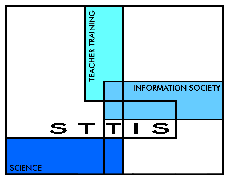Guide
 Contents Contents
|
The
nature of the innovation
The first innovation studied is the introduction in 1989 into the National
Curriculum for England and Wales of the concept of energy transfer. Until
this time most syllabuses and textbooks used the concept of energy transformation.
This issue discussed further in Briefing Sheet
2 ‘Transferring vs Transforming energy’. The implication was that there
should be a move away from thinking about energy as ‘changing from one
form to another’ and to think of it as staying ‘the same kind of thing’,
with the focus on where it is stored and how it goes from one place to
another. Some of the scientific issues involved and their implications
for teaching and learning are considered in Briefing
Sheet 3 ‘Energy – why learn about it?’.
The second innovation studied was the small scale curriculum development
project ‘Energy and Change’ The aim of this material was to introduce in
the 11-16 science curriculum ideas about the causes of change. The key
idea is to pay attention to the differences that drive change (for example,
temperature differences, concentration differences) and the way that differences
tend to disappear. This approach is intended to make accessible to young
pupils ideas about the Second Law of Thermodynamics (which in essence says
that at the molecular level things tend to get jumbled up or disordered).
Though a fundamental law of science, it is often not dealt with much at
school level. To support pupils in understanding the ideas, an abstract
picture language to represent change was developed. Some background information
about this project can be found in Briefing Sheet
4 ‘Introduction to Energy and Change’ materials’. There are many different
examples of the abstract pictures and pupil activities in Section
B of Teacher Workshop 1 (Activities B3 to B8).
|

 Teaching about energy
Teaching about energy

